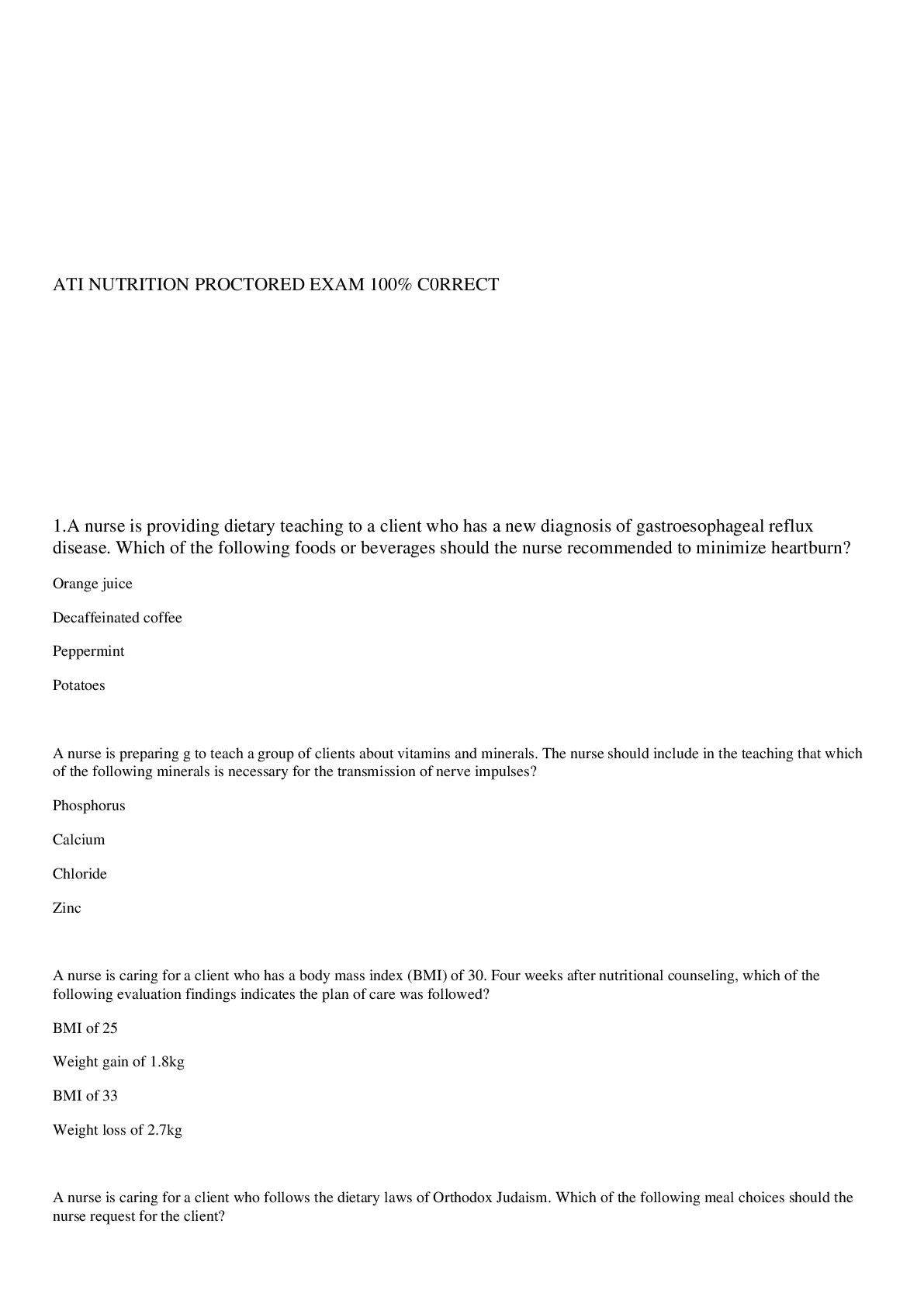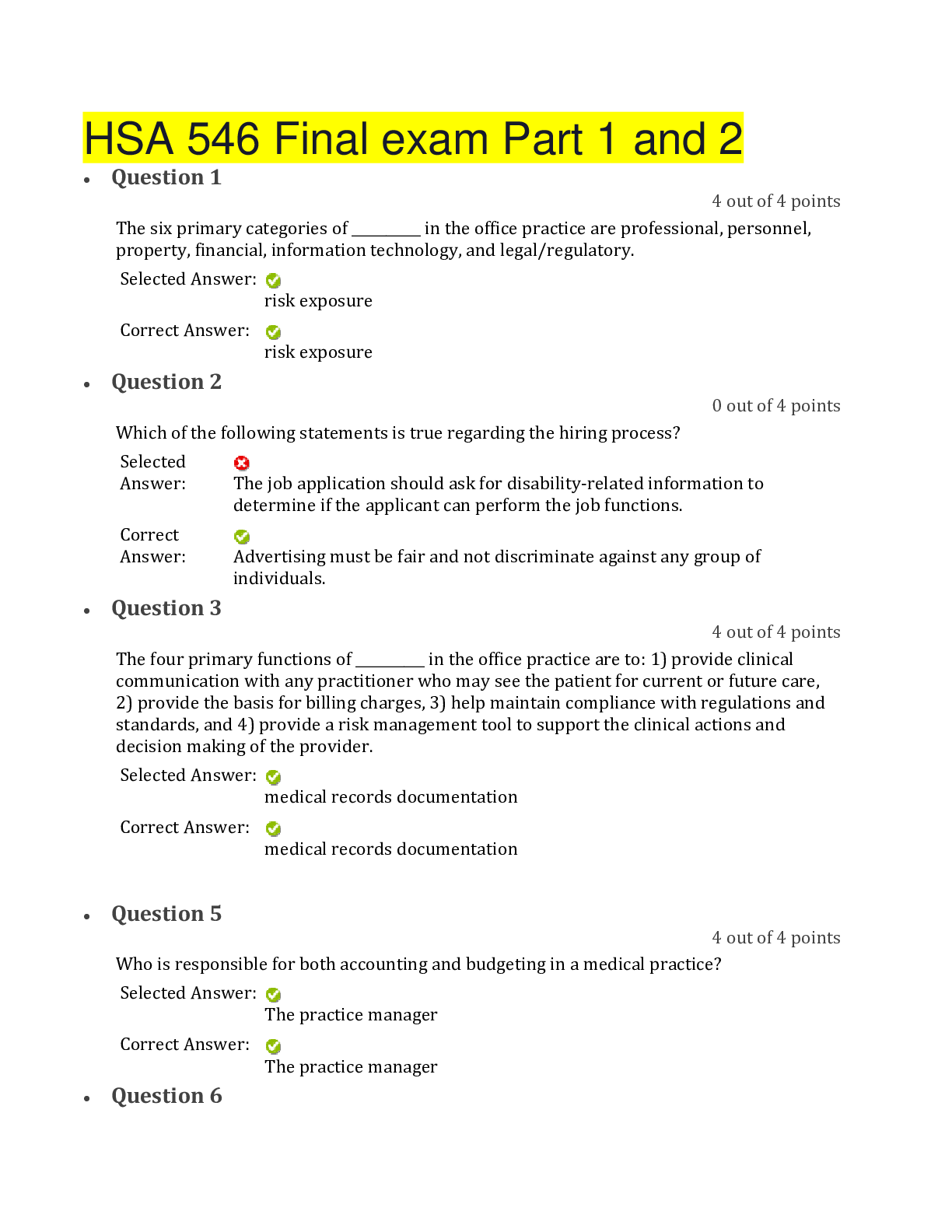*NURSING > EXAM > NRP 2021 PRACTICE EXAM 50 QUESTIONS AND ANSWERS ALL 100% CORRECT GUARANTEED GRADE A+ (All)
NRP 2021 PRACTICE EXAM 50 QUESTIONS AND ANSWERS ALL 100% CORRECT GUARANTEED GRADE A+
Document Content and Description Below
After the initial steps of newborn care, a baby is apneic. What is the most important and effective action to take in the resuscitation of this baby? Provide positive-pressure ventilation. Perform ch... est compressions. Provide additional vigorous stimulation Provide supplemental oxygen. - CORRECT ANSWER Provide positive-pressure ventilation. During the resuscitation of a newborn, you auscultate the apical pulse and count 10 beats over a 6 second period. What heart rate do you report to your team? 60 beats per minute 120 beats per minute 100 beats per minute 30 beats per minute - CORRECT ANSWER 100 beats per minute A newborn of 34 weeks' gestation is not breathing (apneic) at birth, does not respond to initial steps and requires positive-pressure ventilation. What concentration of oxygen should be used as you begin positive-pressure ventilation? 30 - 50% oxygen 100% oxygen 50 - 70% oxygen 21 - 30% oxygen - CORRECT ANSWER 21 - 30% oxygen You are at the resuscitation of a newborn who is gasping and has a heart rate of 60 beats per minute. What is the most important action you can take? Provide chest compressions Apply CPAP Provide positive-pressure ventilation Provide free-flow oxygen - CORRECT ANSWER Provide positive-pressure ventilation What is the most effective maneuver to establish spontaneous breathing in a baby that is apneic after initial steps? Continued rubbing of the back Administration of free-flow oxygen Administration of positive-pressure ventilation that inflates the lungs Application of CPAP - CORRECT ANSWER Administration of positive-pressure ventilation that inflates the lungs Remembering MR. SOPA helps your team correct problems with ventilation. Which of the following steps are included in MR. SOPA? Adjust Mask and Reposition head and neck; Suction mouth then nose and Open the mouth; increase Pressure; insert Alternative airway. Mouth opened, Reposition head, Saturation check, Obstruction check, Pulse oximeter sensor, Apply cardiac monitor leads. Ensure Mask seal, Repeat stimulation, Suction the airway, Oxygen regulation, Pulse oximeter sensor, Assess heart rate. Mouth opened, Repeat stimulation, Saturation check, Occlude pop-off valve, Perfusion check, Auscultate breath sounds. - CORRECT ANSWER Adjust Mask and Reposition head and neck; Suction mouth then nose and Open the mouth; increase Pressure; insert Alternative airway A baby is born at 34 weeks' gestation. After the initial steps of resuscitation, the baby is not breathing (apneic). What are the next steps? Provide additional tactile stimulation, evaluate color and tone, evaluate heart rate. Administer free-flow oxygen, place a pulse oximeter sensor on the right hand or wrist, evaluate heart rate. Administer CPAP, place a pulse oximeter sensor on the right hand or wrist, evaluate color and tone. Initiative positive-pressure ventilation, place a pulse oximeter sensor on the right hand or wrist, evaluate heart rate. - CORRECT ANSWER Initiative positive-pressure ventilation, place a pulse oximeter sensor on the right hand or wrist, evaluate heart rate. You are called to attend to a newborn at birth. At the time the baby is delivered, which 3 questions should you ask to evaluate whether the baby can stay with his mother or be moved to the radiant warmer for further assessment? Is the baby warm? Does the baby have good tone? Is the baby full-term? Is the amniotic fluid clear? Is the baby breathing or crying? Is the baby of low birth weight? Is the baby pink? Is the baby breathing or crying? Is the amniotic fluid clear? Is the baby term? Does the baby have good muscle tone? Is the baby breathing or crying? - CORRECT ANSWER Is the baby term? Does the baby have good muscle tone? Is the baby breathing or crying? A full-term baby is born by emergency cesarean delivery because of fetal bradycardia (Category III fetal heart rate tracing). The baby is limp and not breathing after initial steps. What is the next step in the resuscitation process? Initiate positive-pressure ventilation and check for increasing heart rate Continue stimulating the baby for an additional 30 seconds Initiate chest compressions using the 2-thumb technique Provide free-flow oxygen, and begin chest compressions. - CORRECT ANSWER Initiate positive-pressure ventilation and check for increasing heart rate. What is the recommended way to determine if a baby requires supplemental oxygen in the delivery room? Place an oximeter sensor on the baby's right hand or wrist and assess oxygen saturation. Assess the color of the baby's chest and abdomen, and monitor for central cyanosis. Assess the color of the baby's hands and feet. Send an arterial blood gas, and evaluate the partial pressure of oxygen. - CORRECT ANSWER Place an oximeter sensor on the baby's right hand or wrist and assess oxygen saturation [Show More]
Last updated: 1 year ago
Preview 1 out of 14 pages
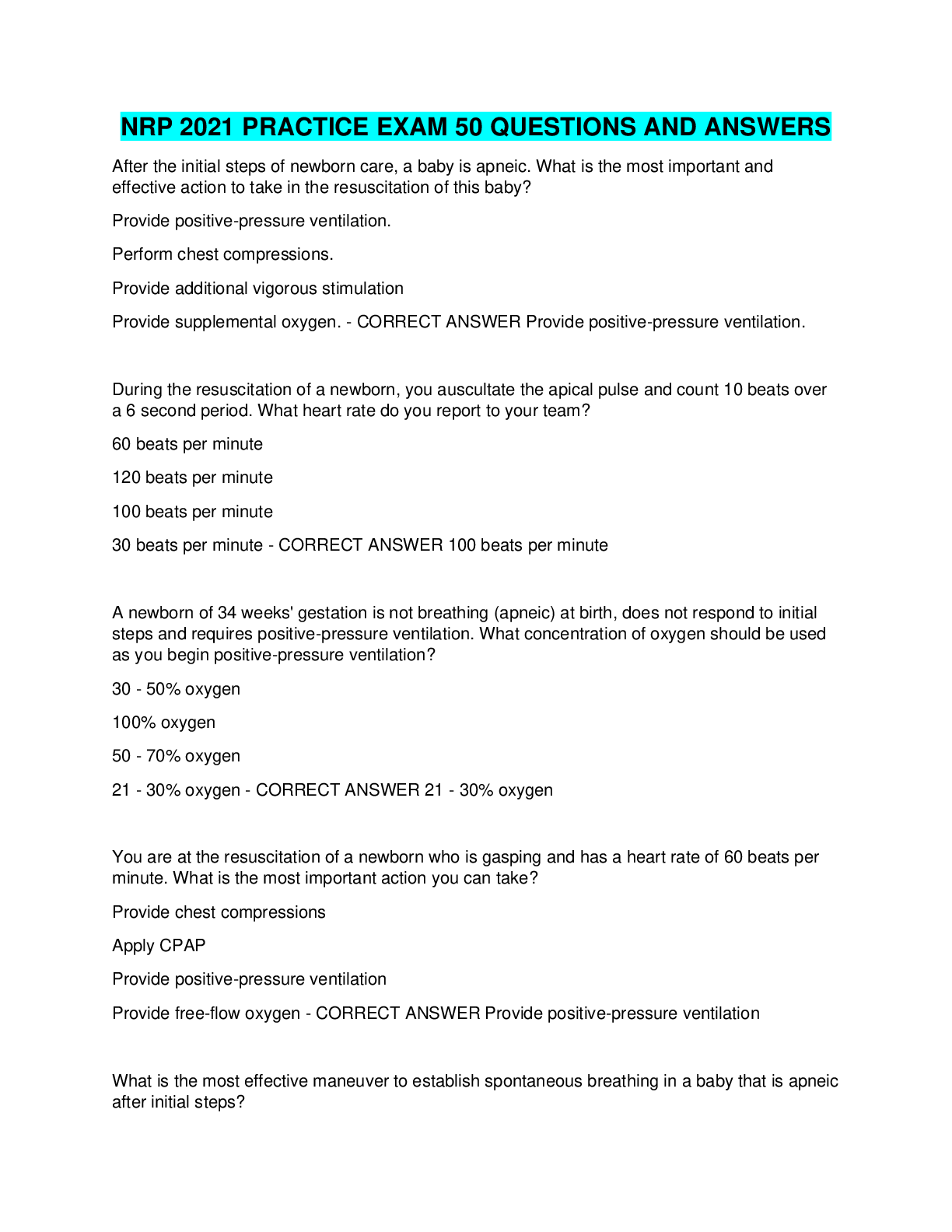
Reviews( 0 )
Document information
Connected school, study & course
About the document
Uploaded On
Jun 09, 2022
Number of pages
14
Written in
Additional information
This document has been written for:
Uploaded
Jun 09, 2022
Downloads
0
Views
22


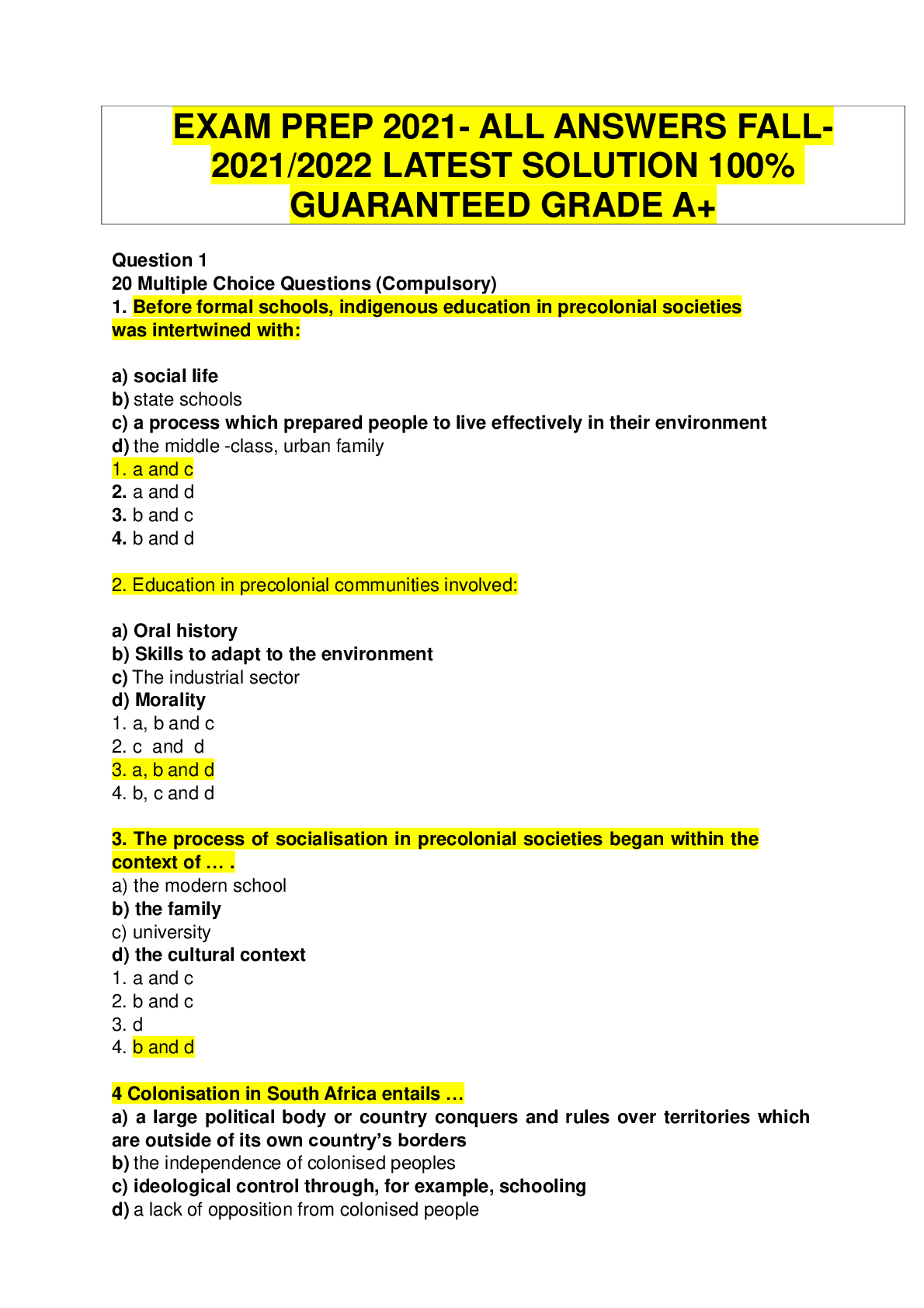
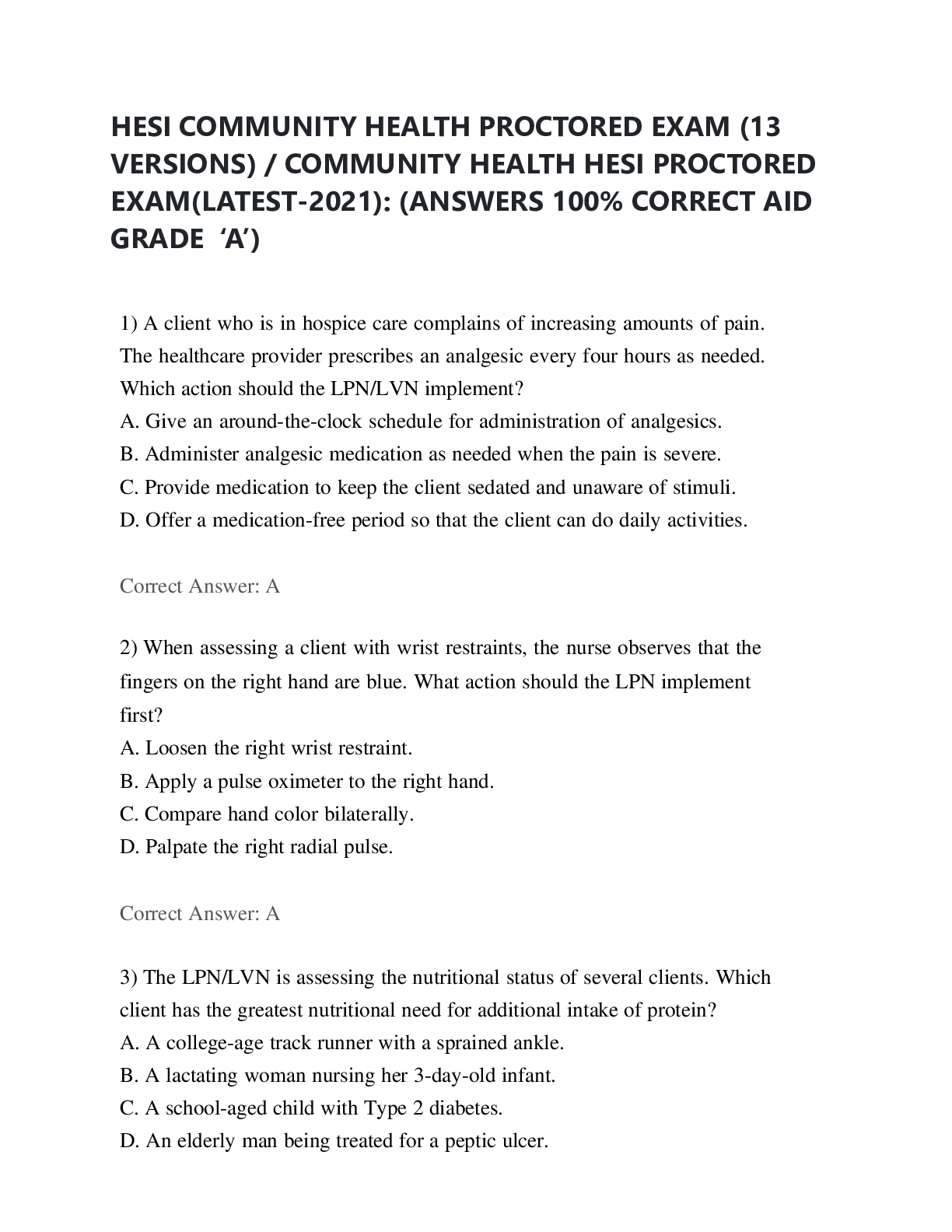
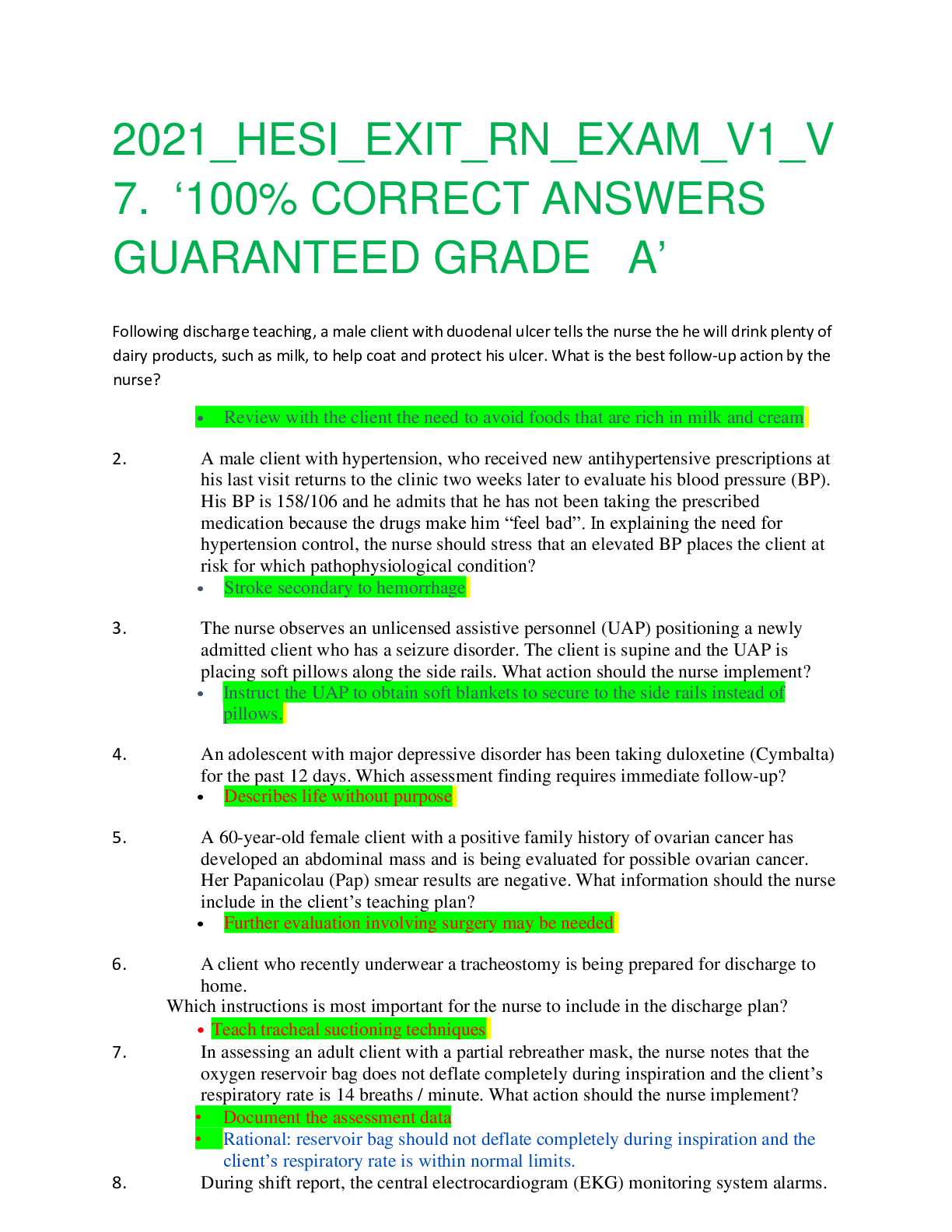
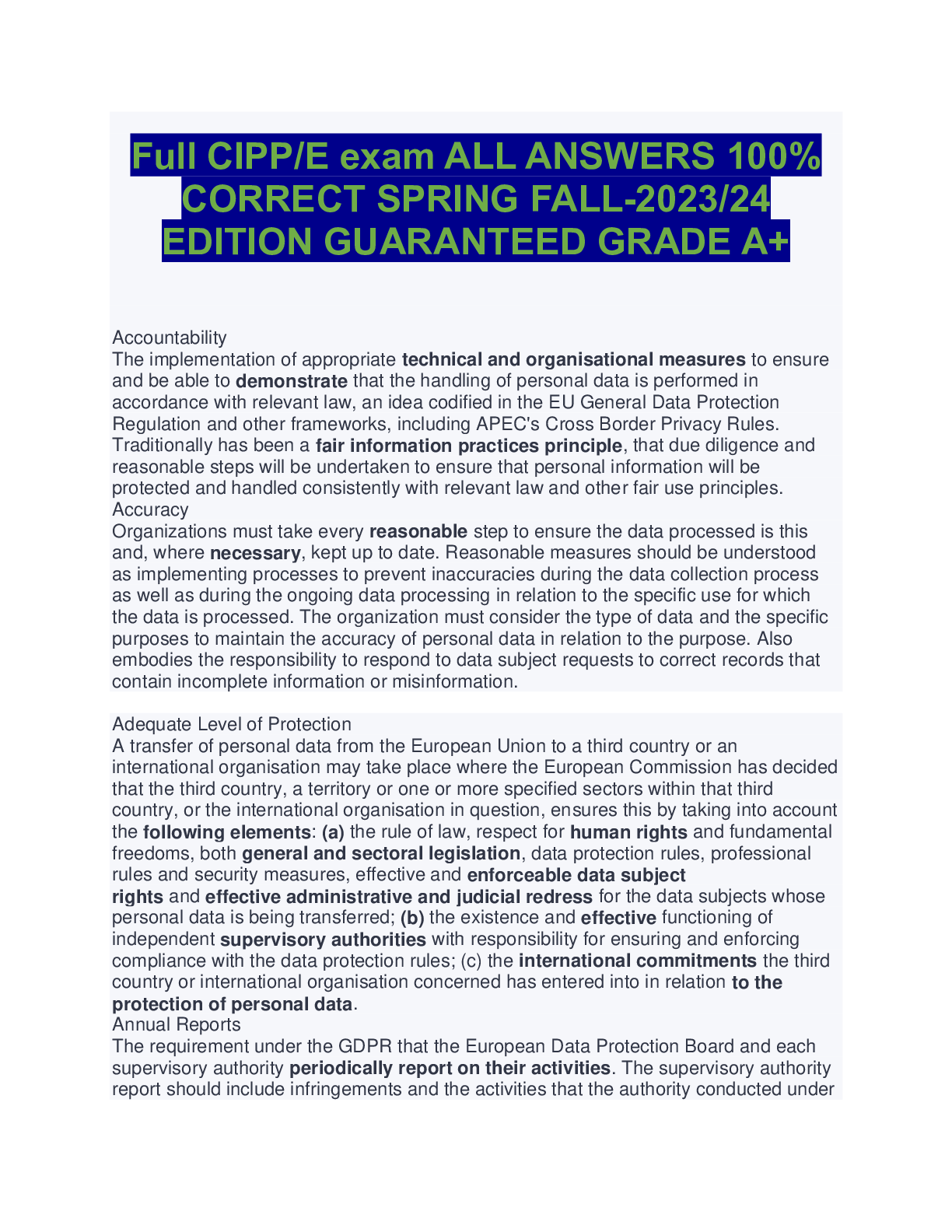

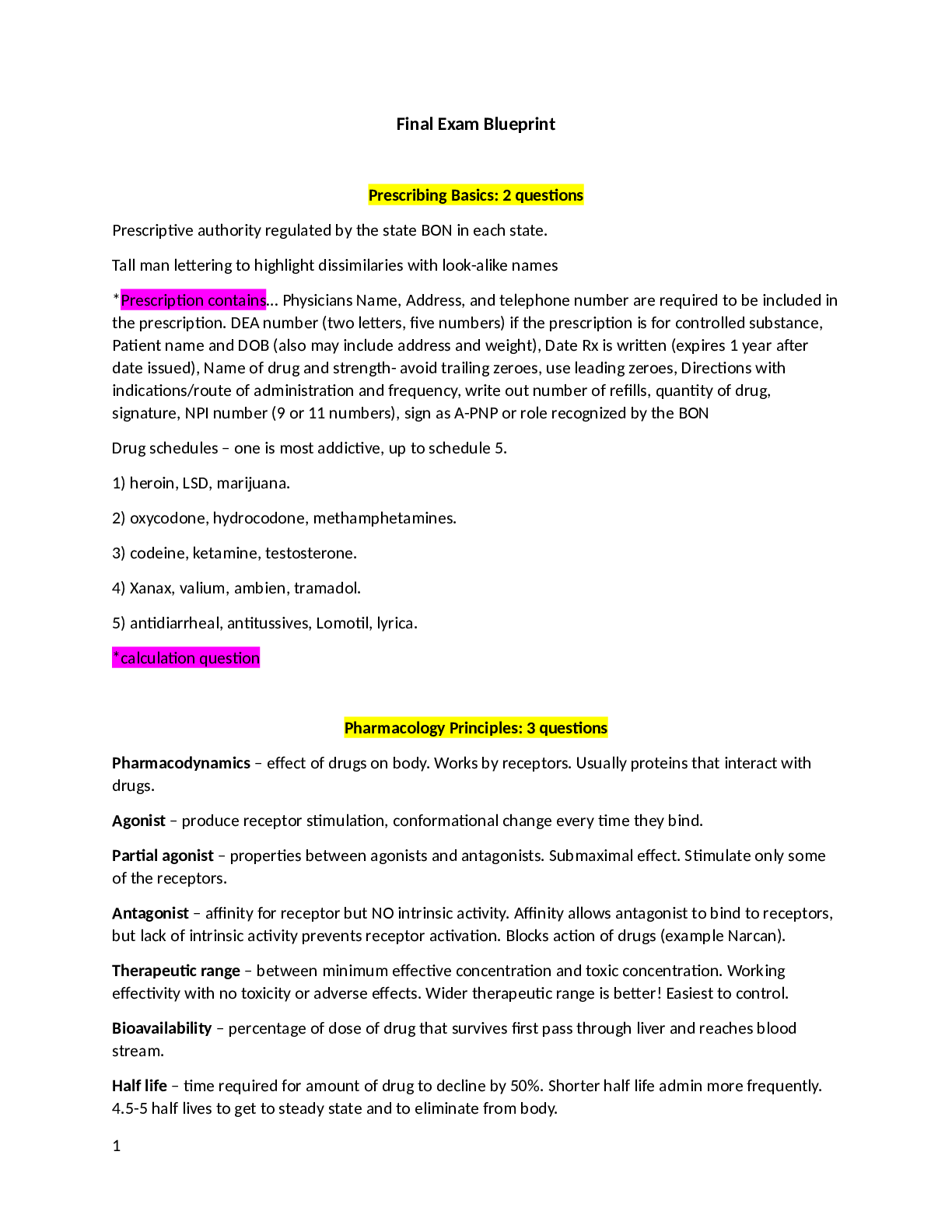
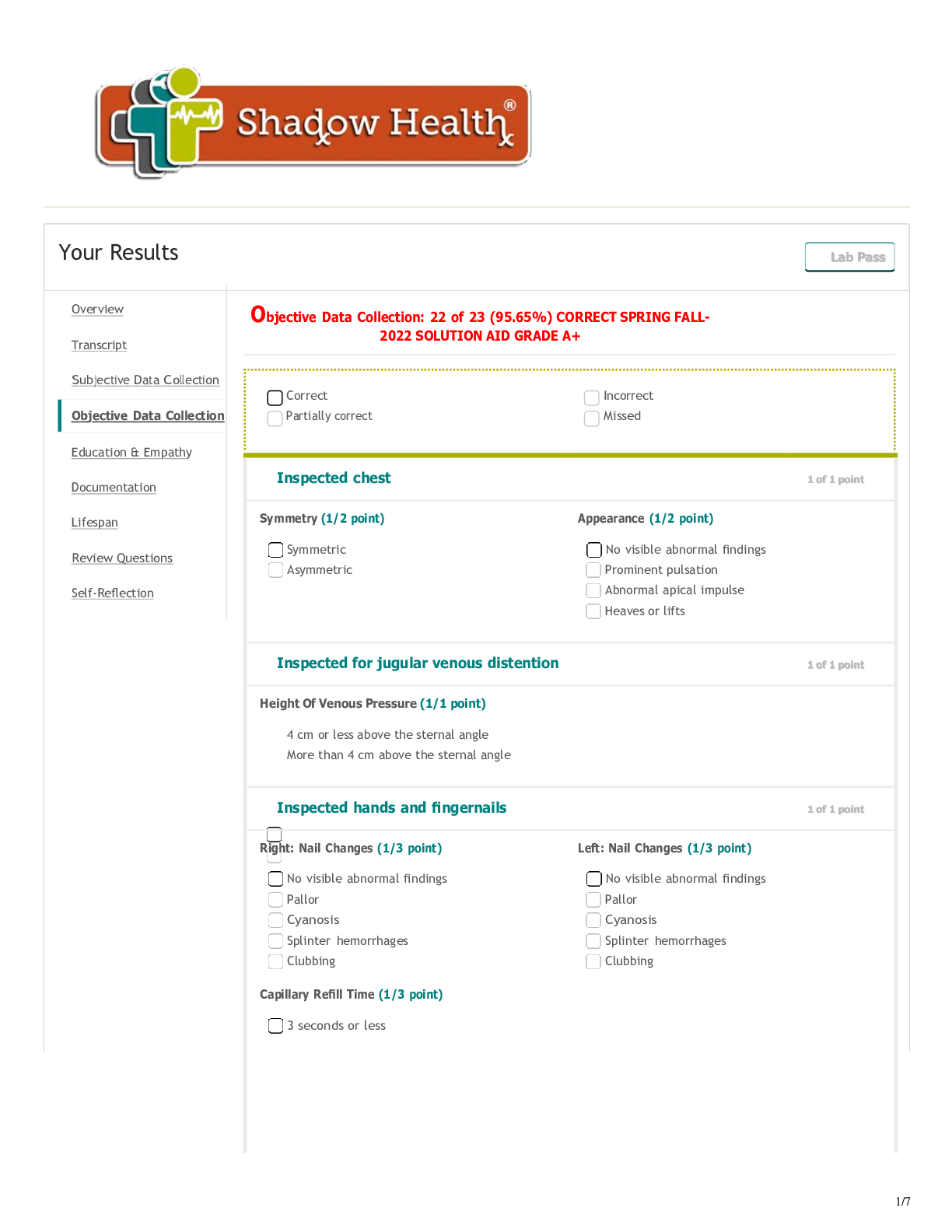
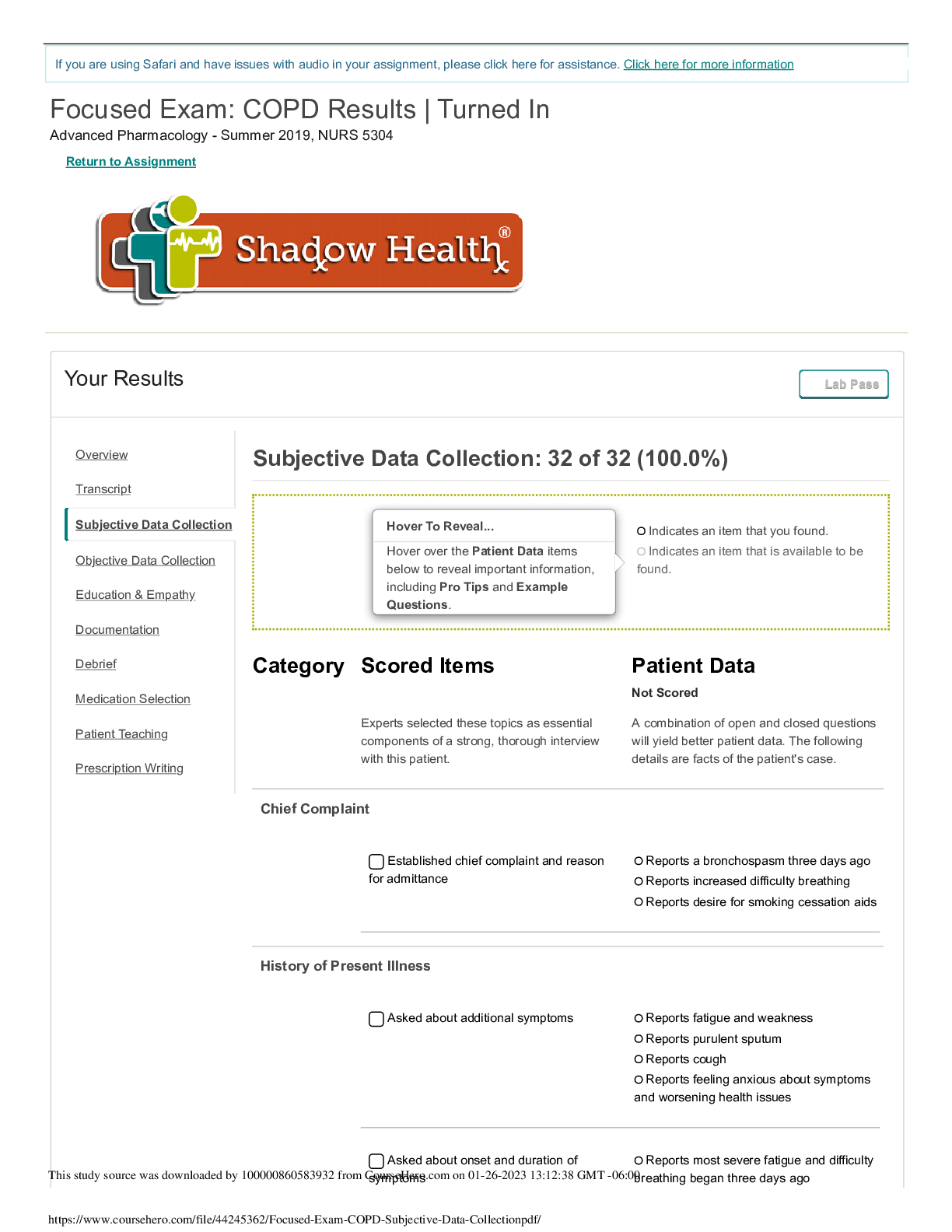
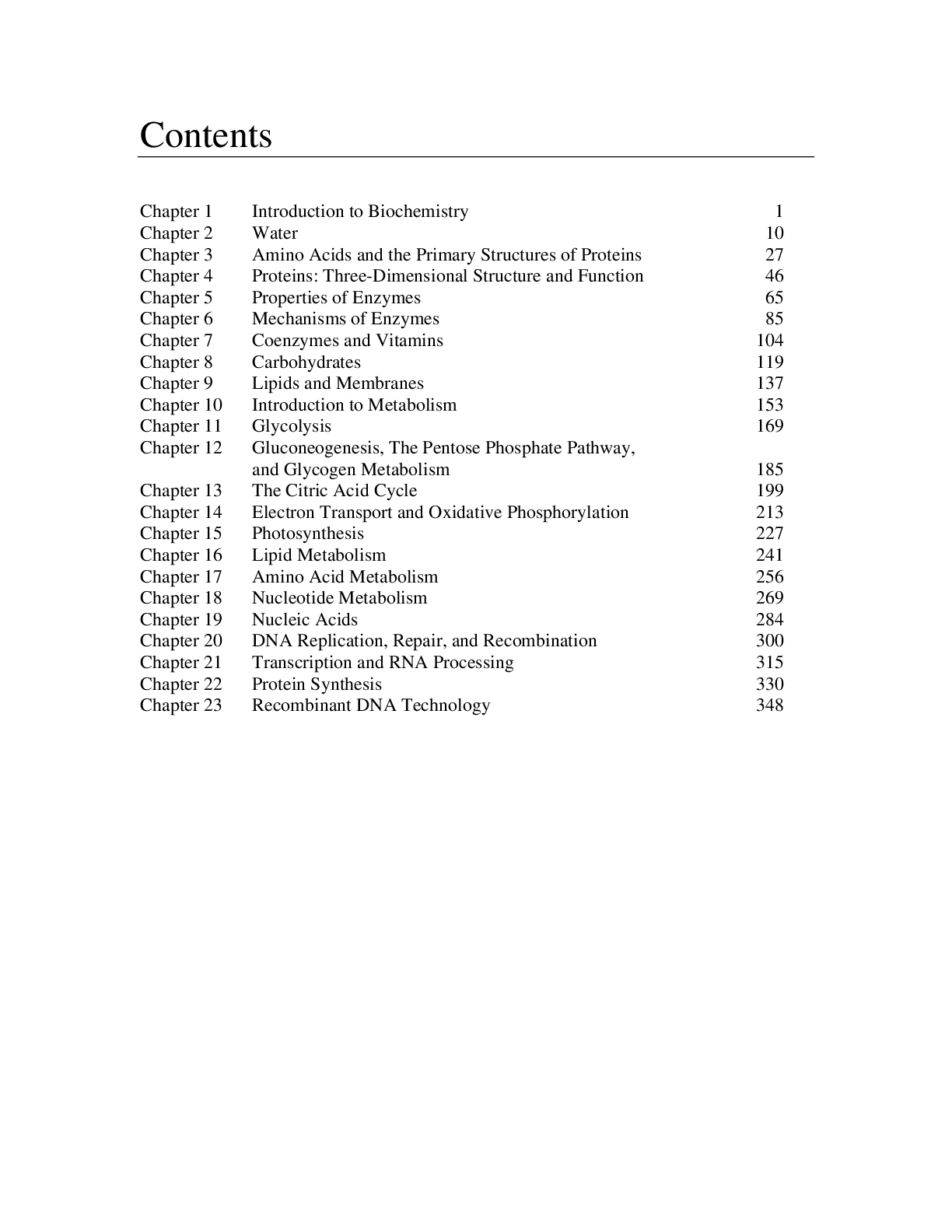


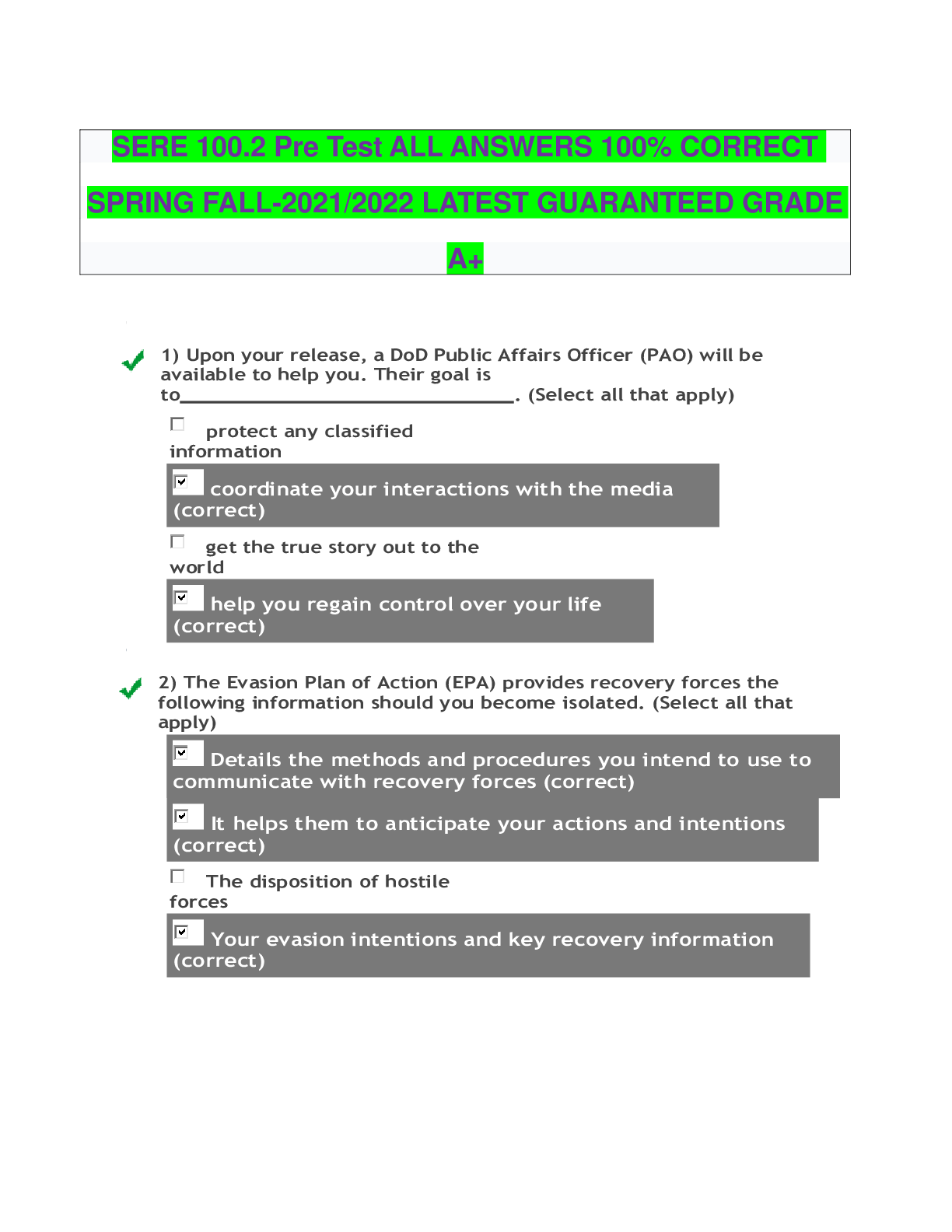
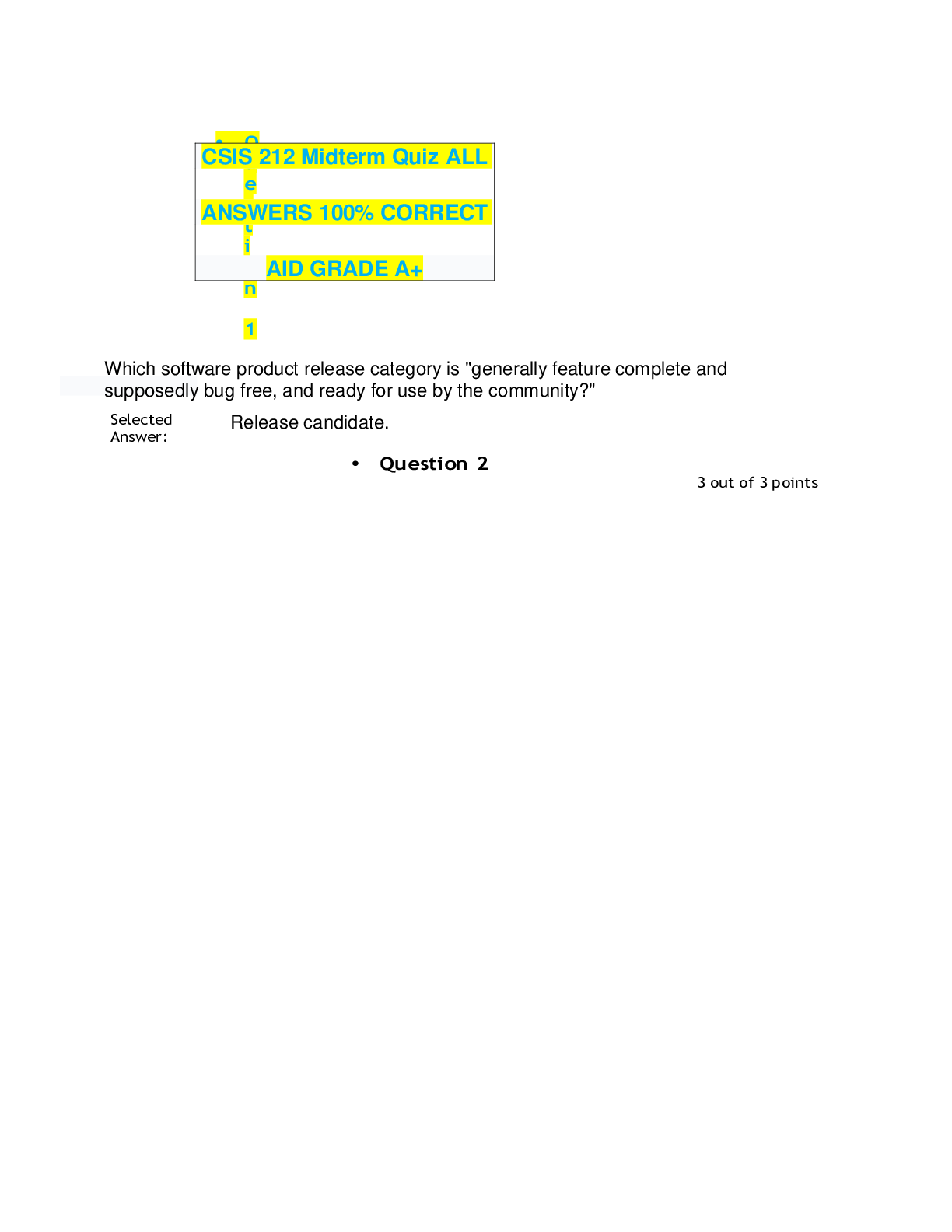
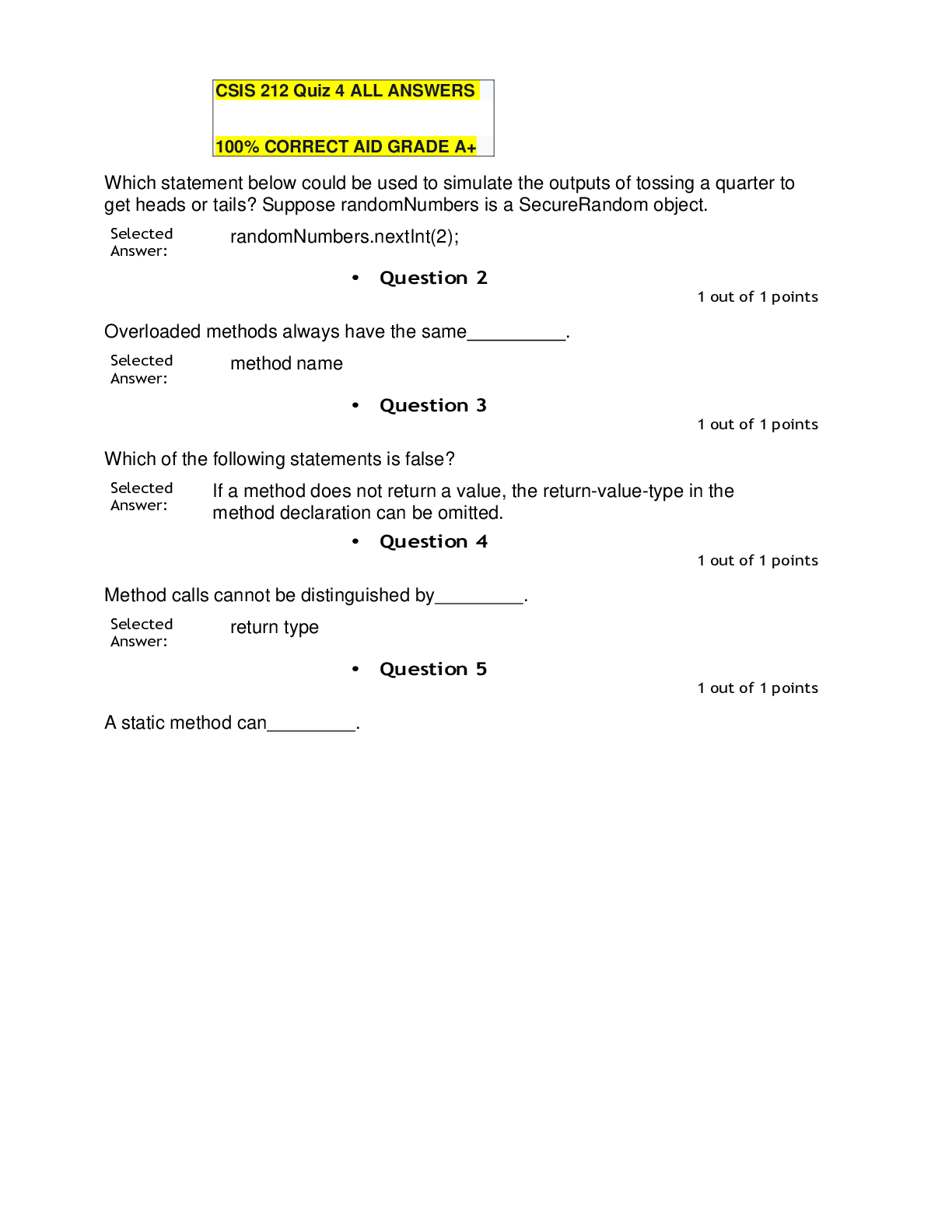
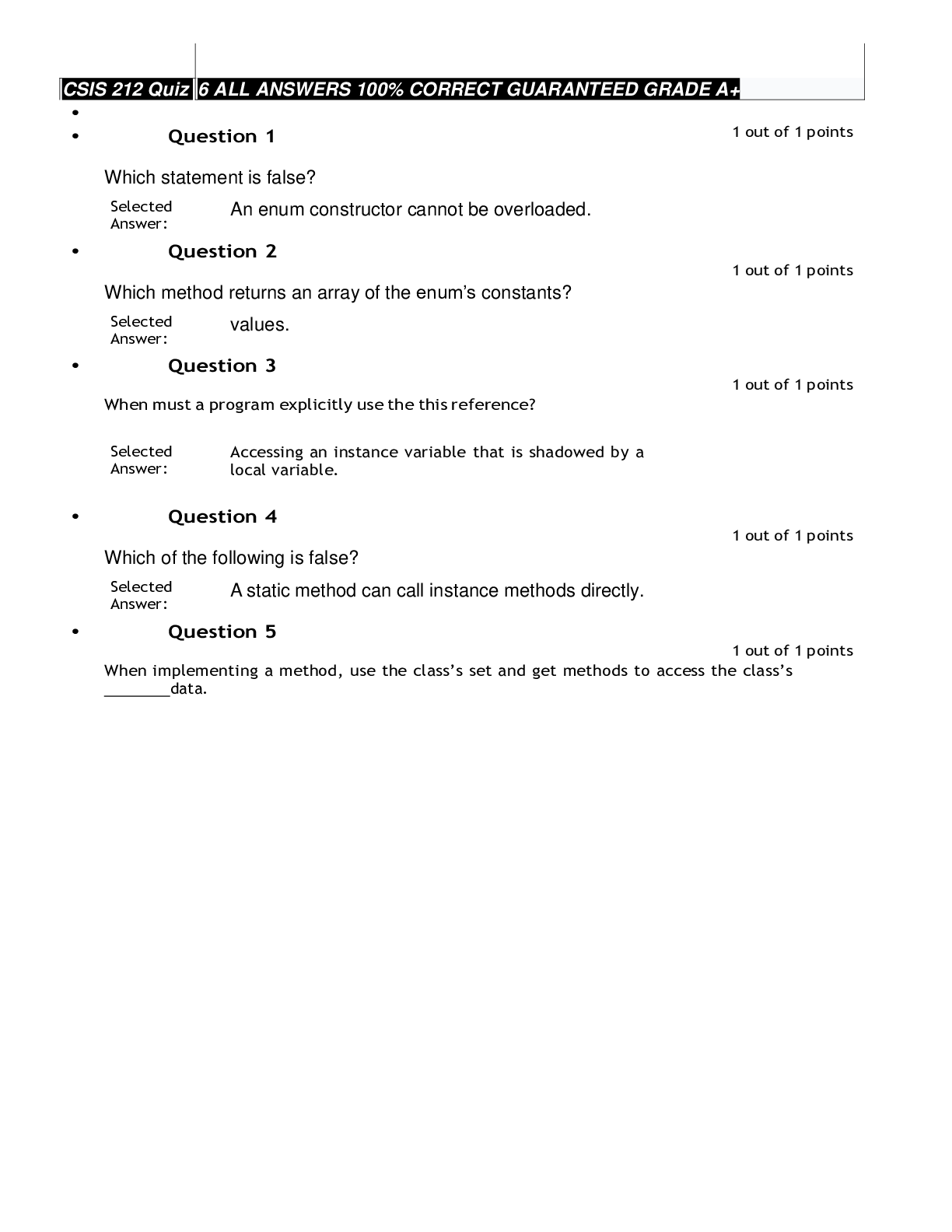

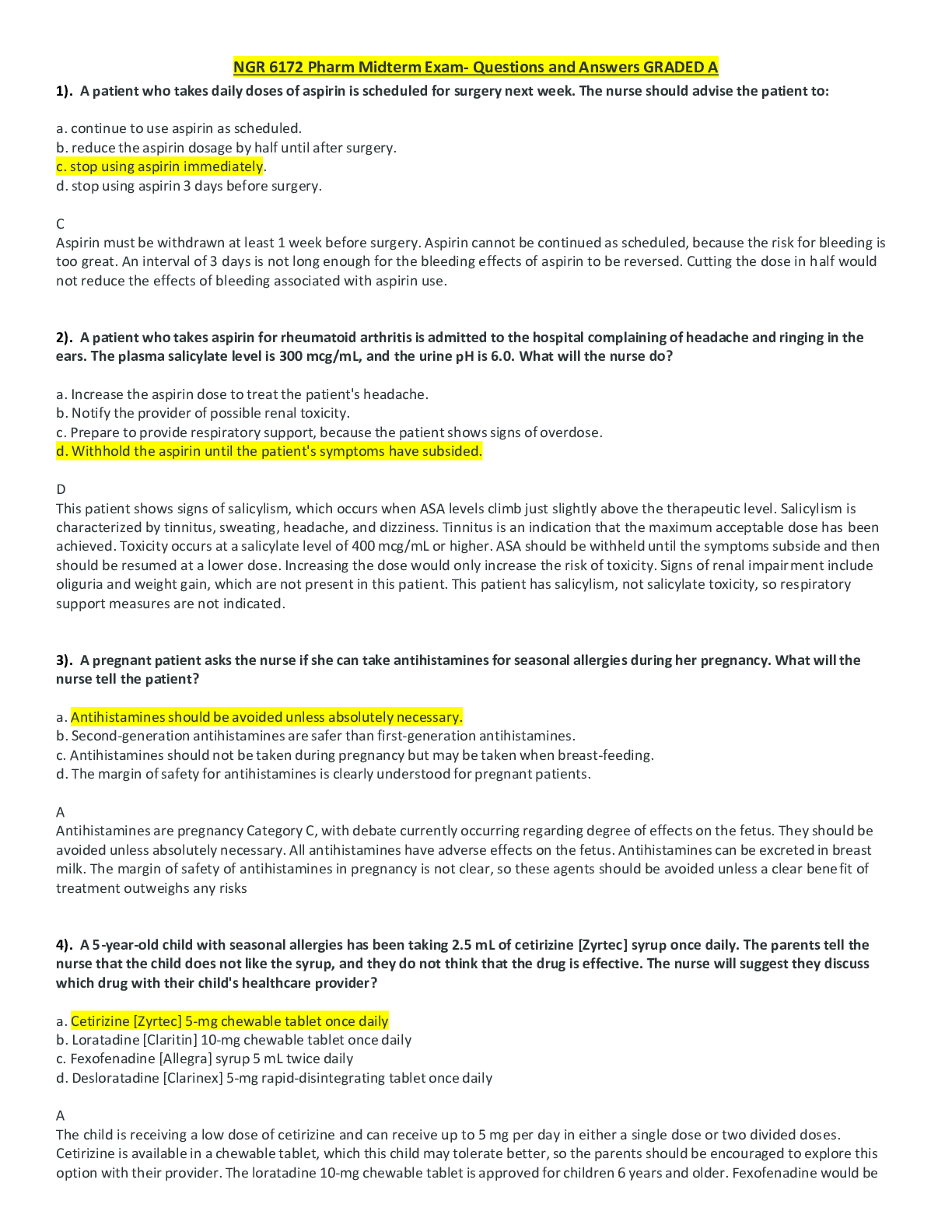

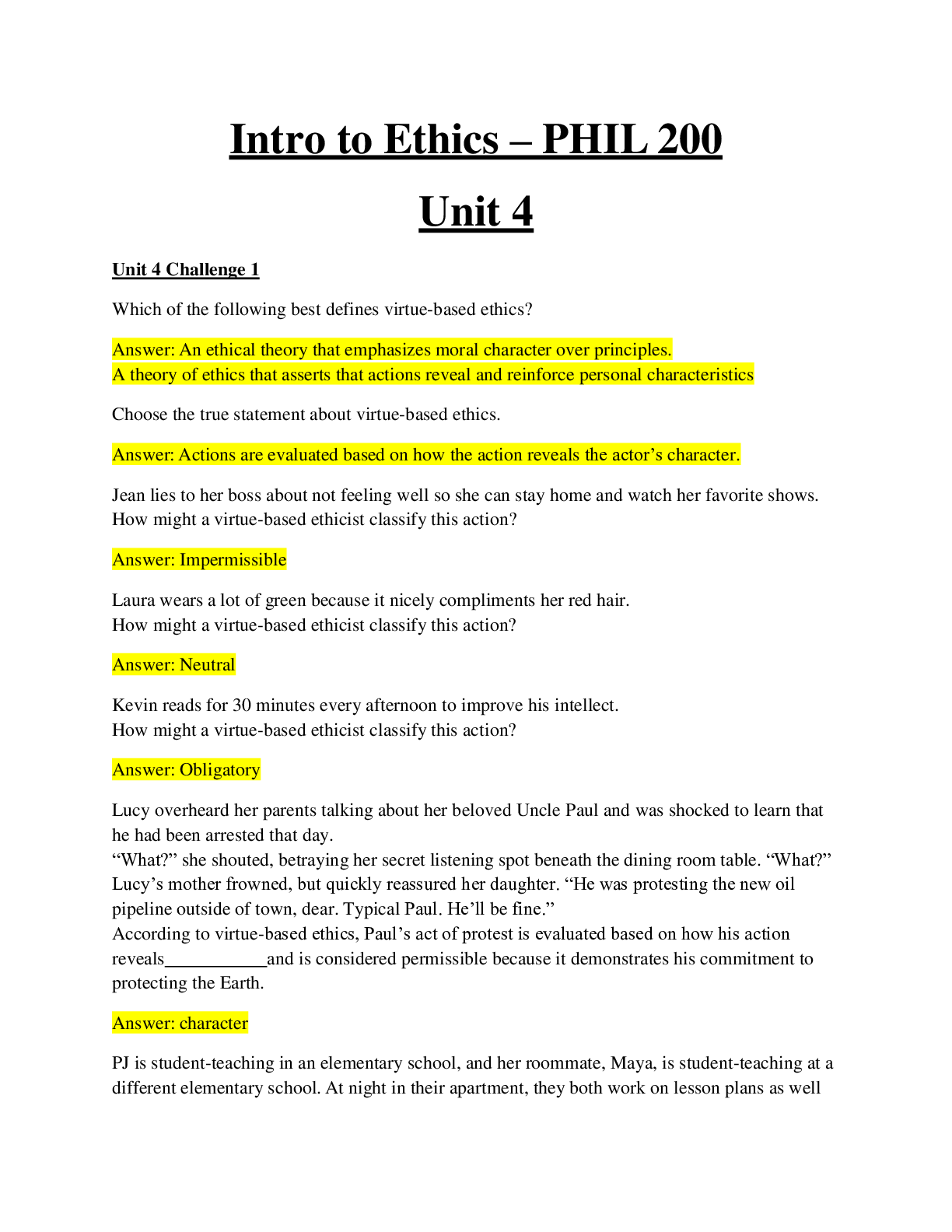
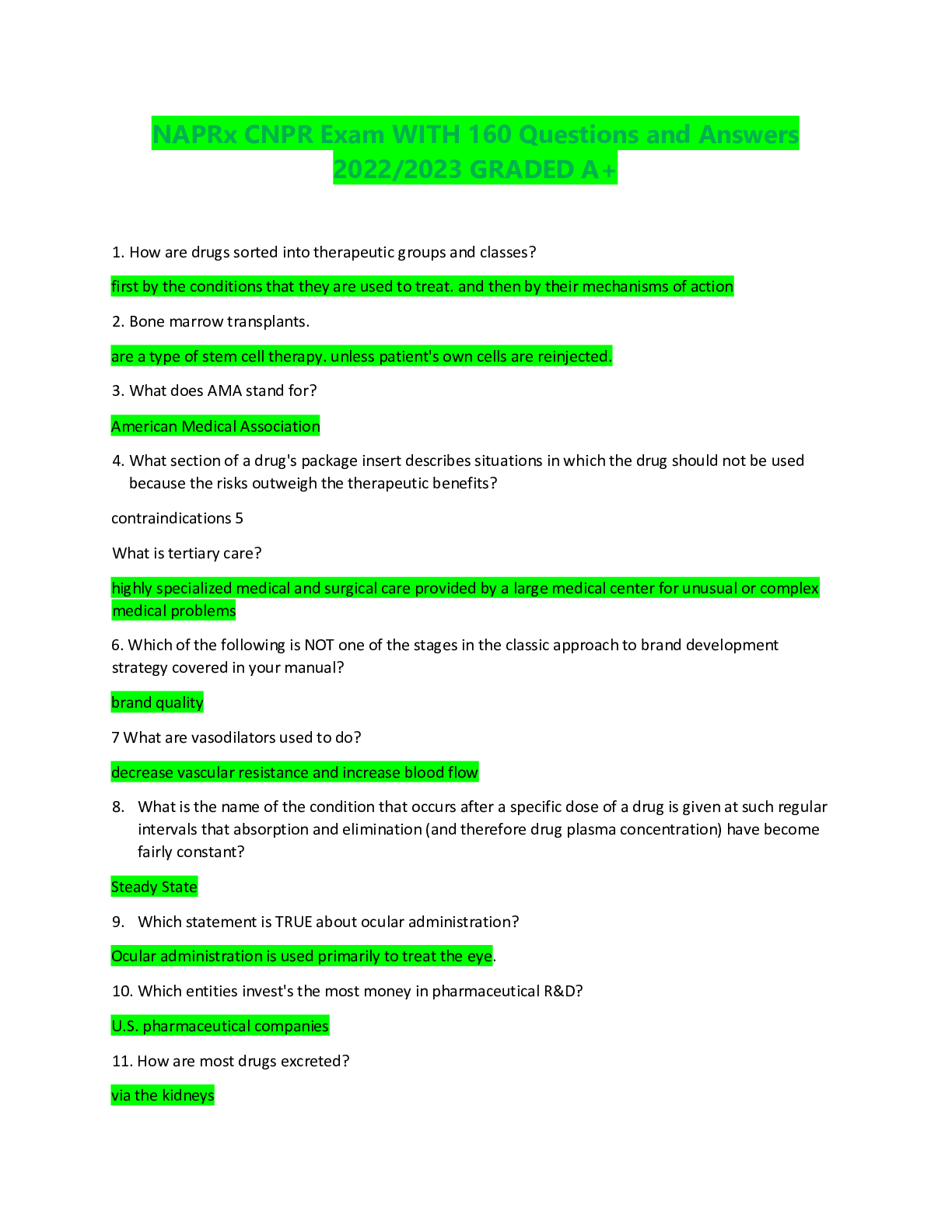
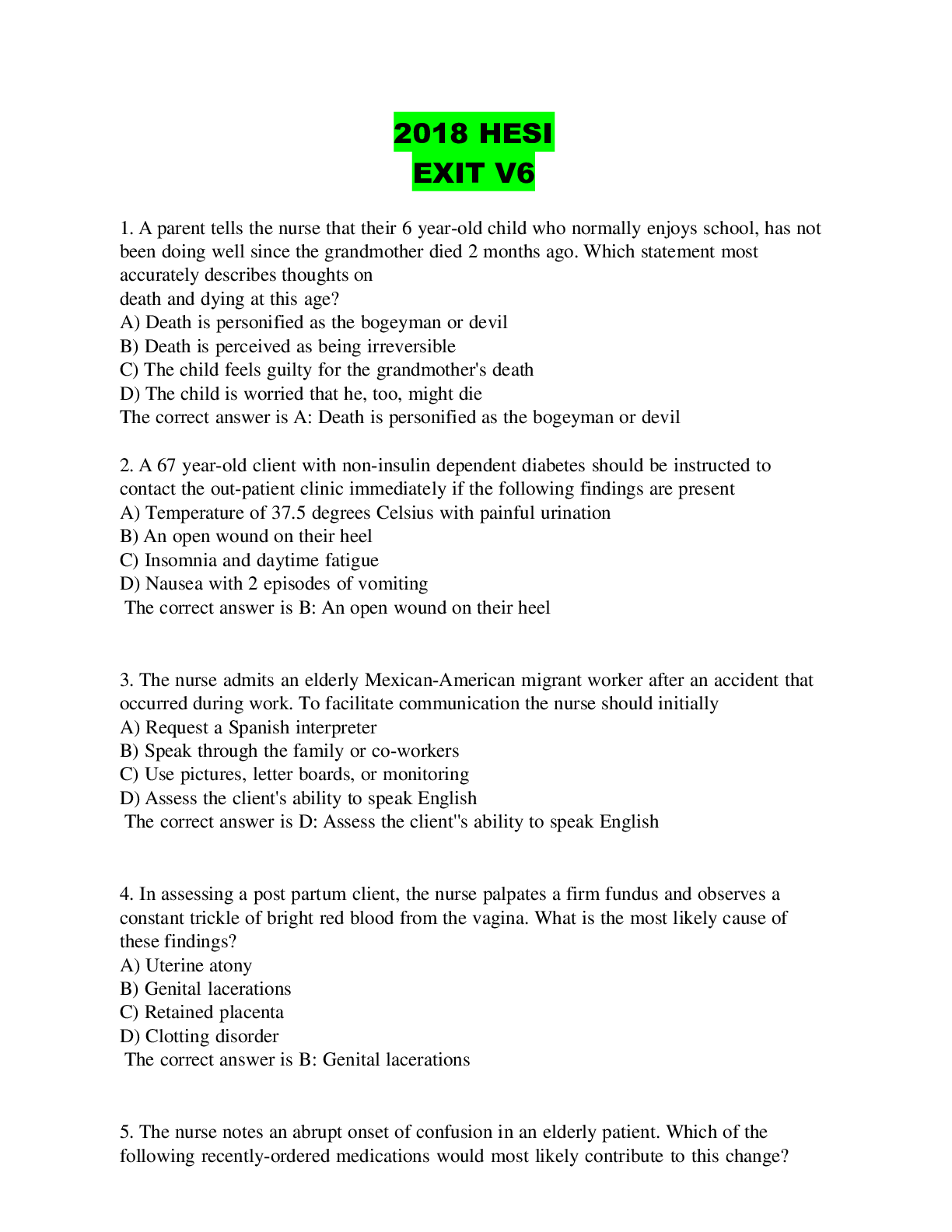
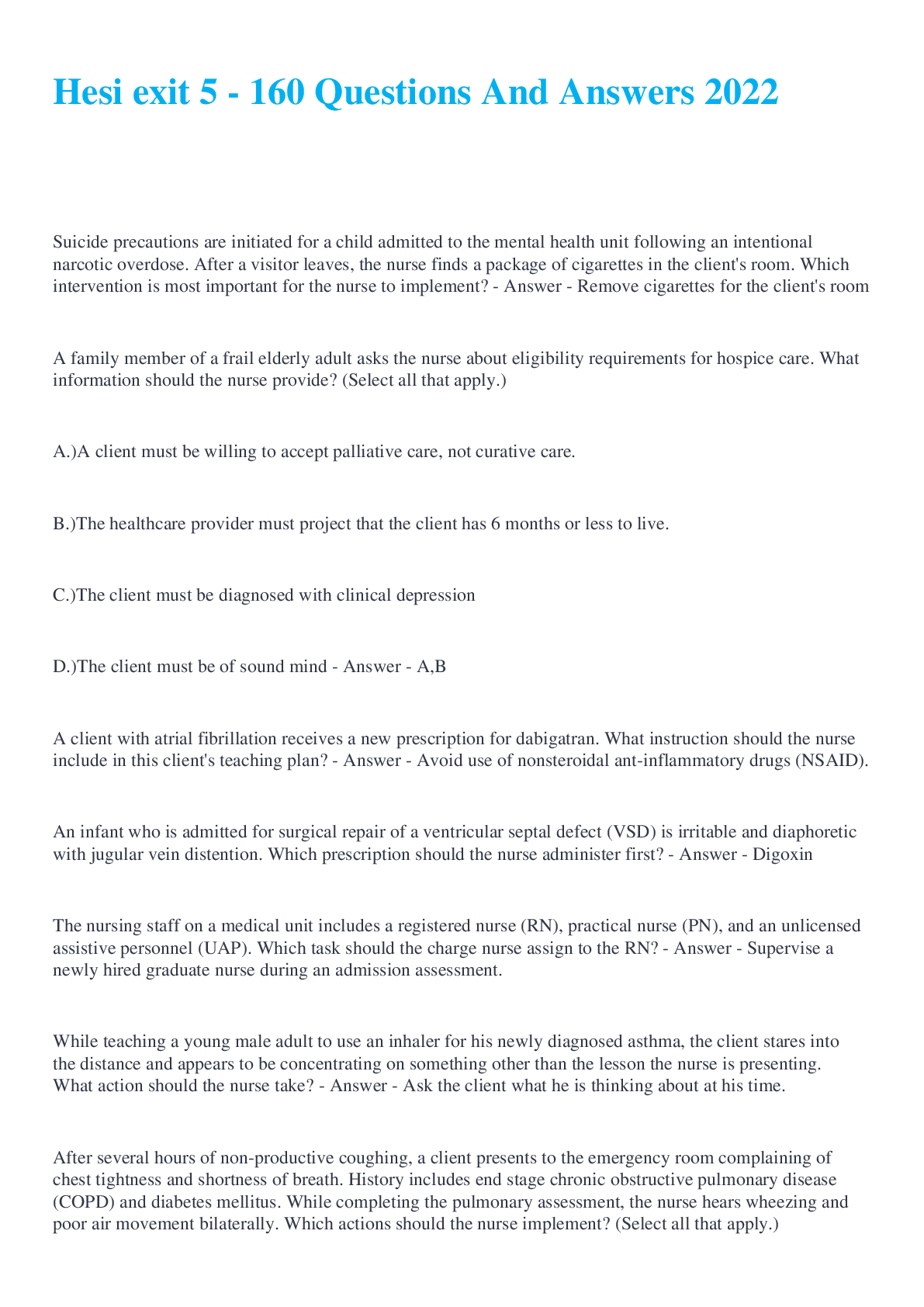
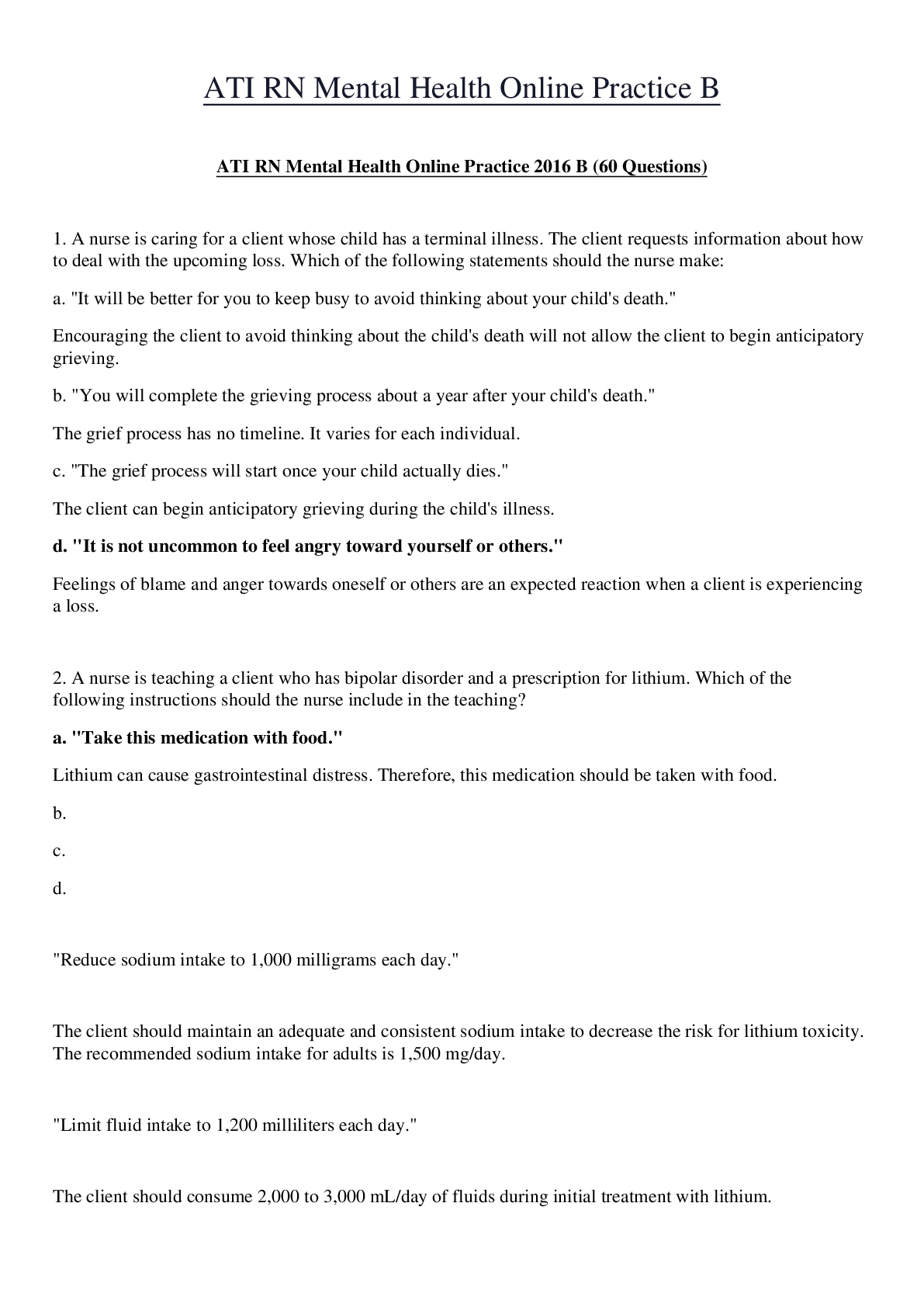
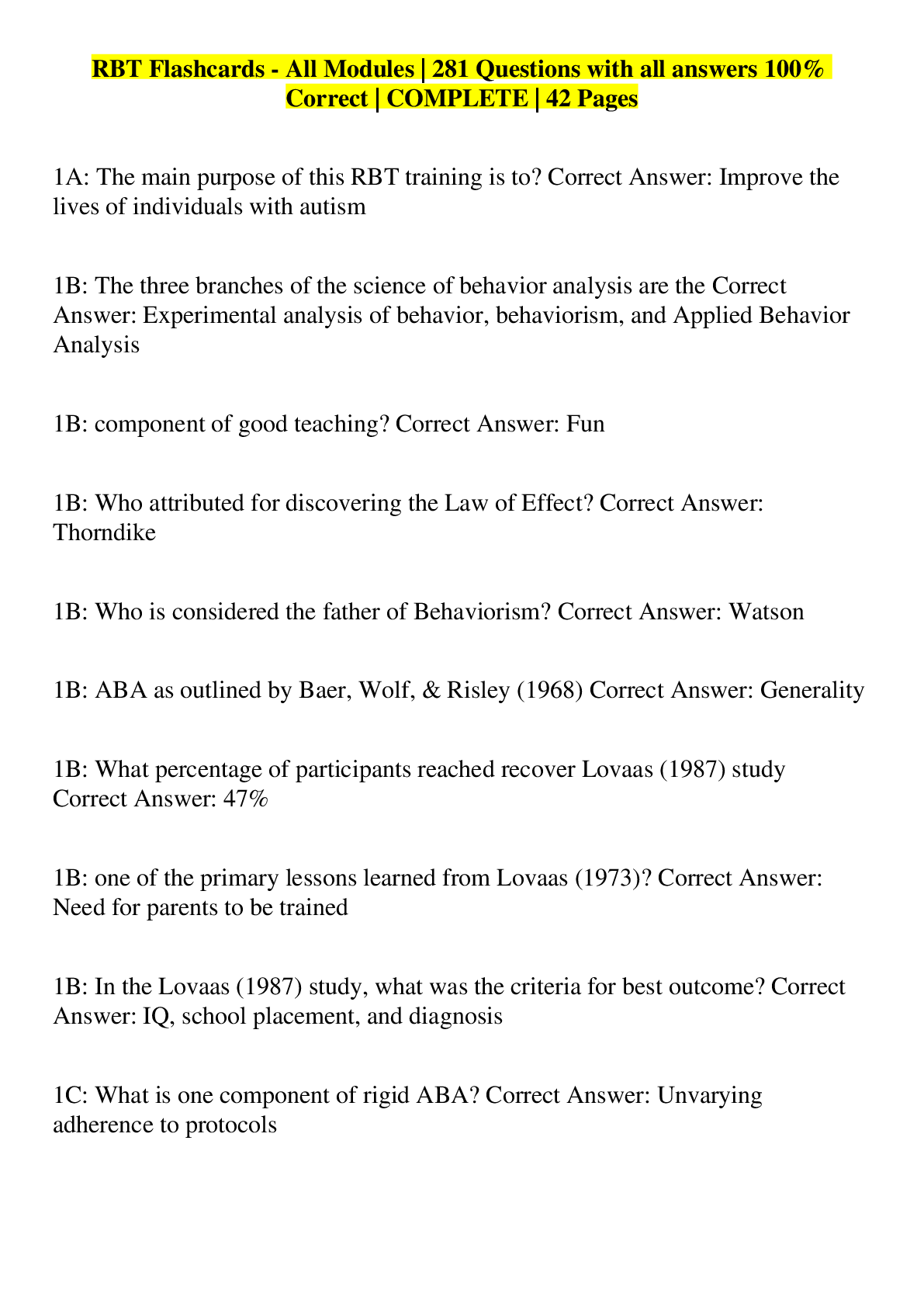
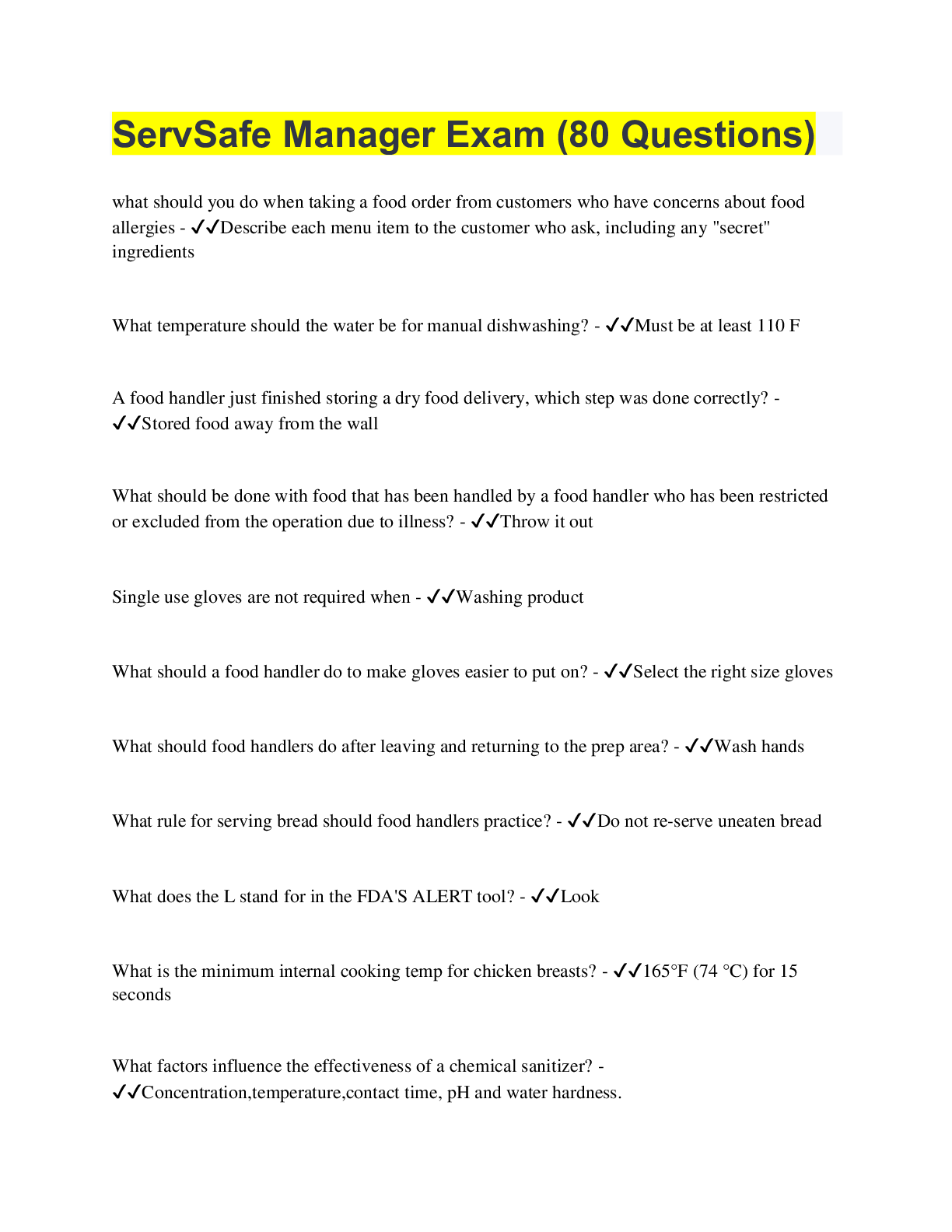
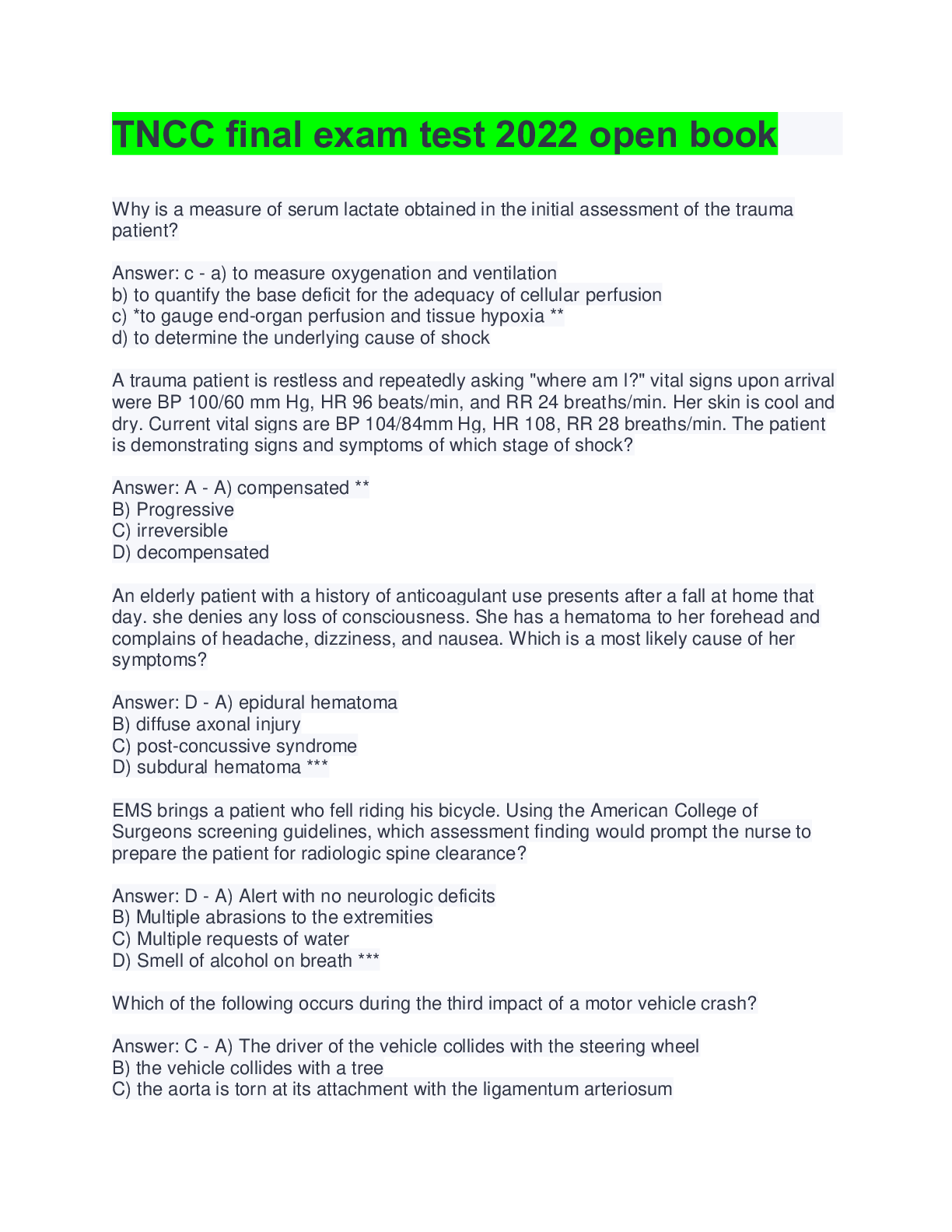

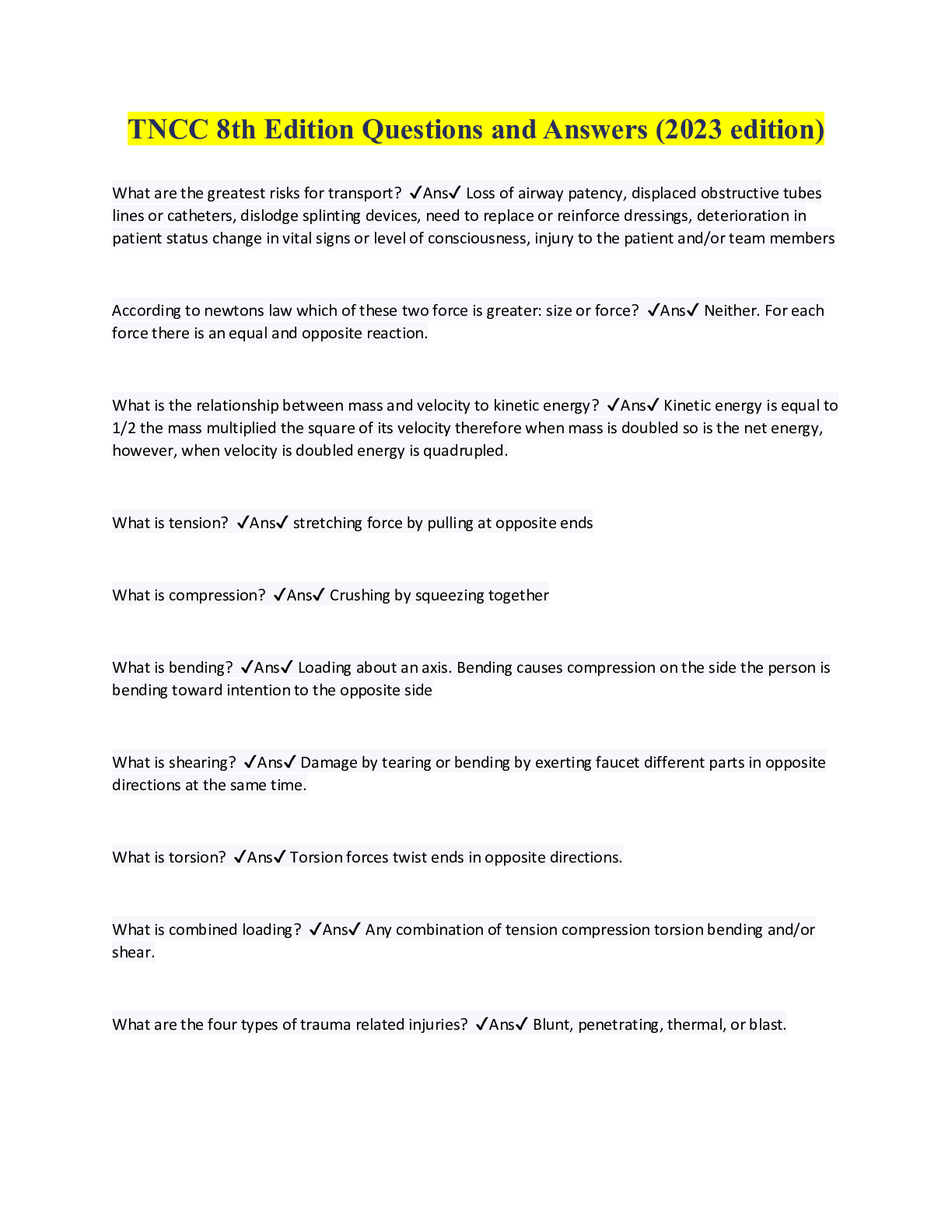

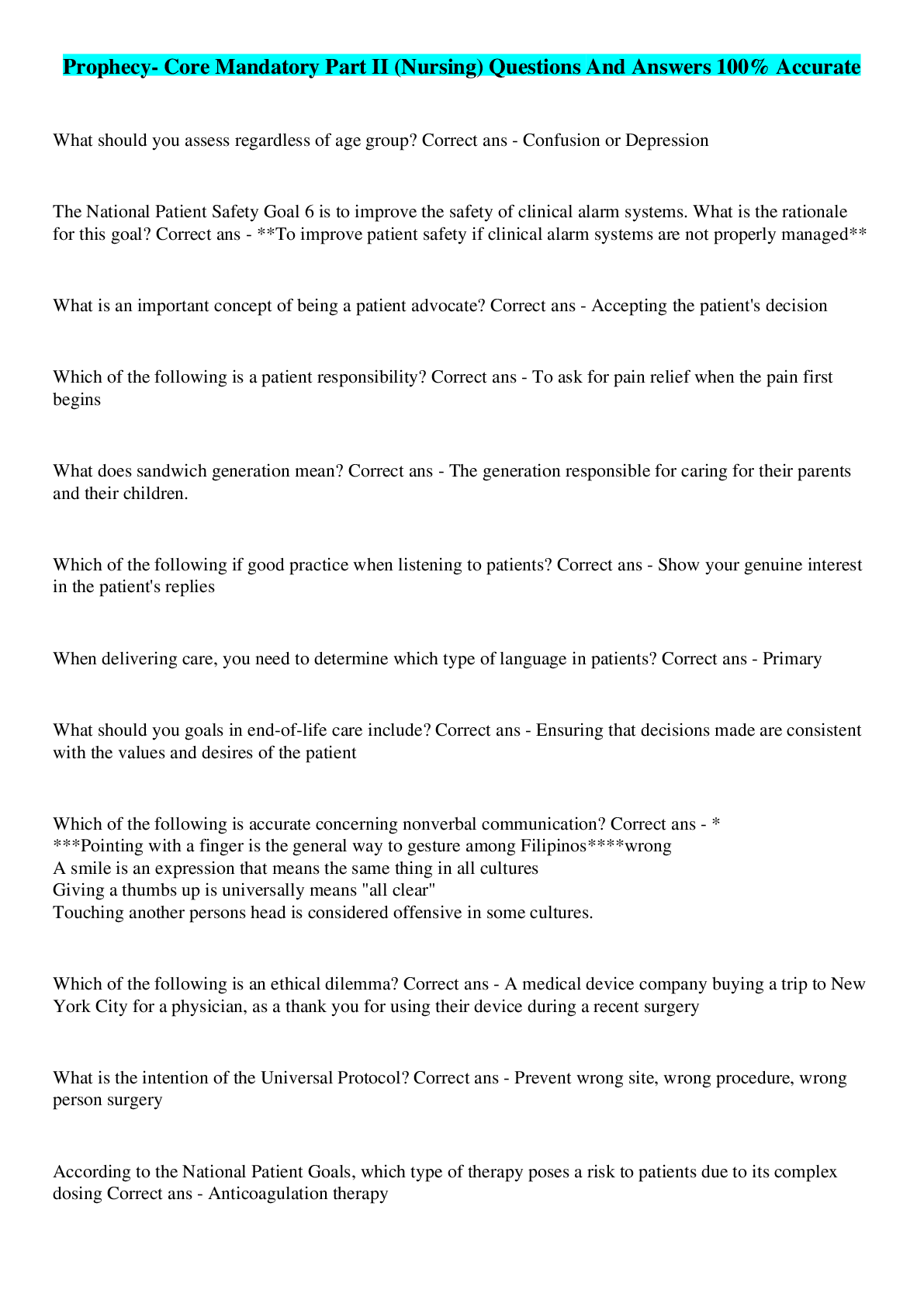
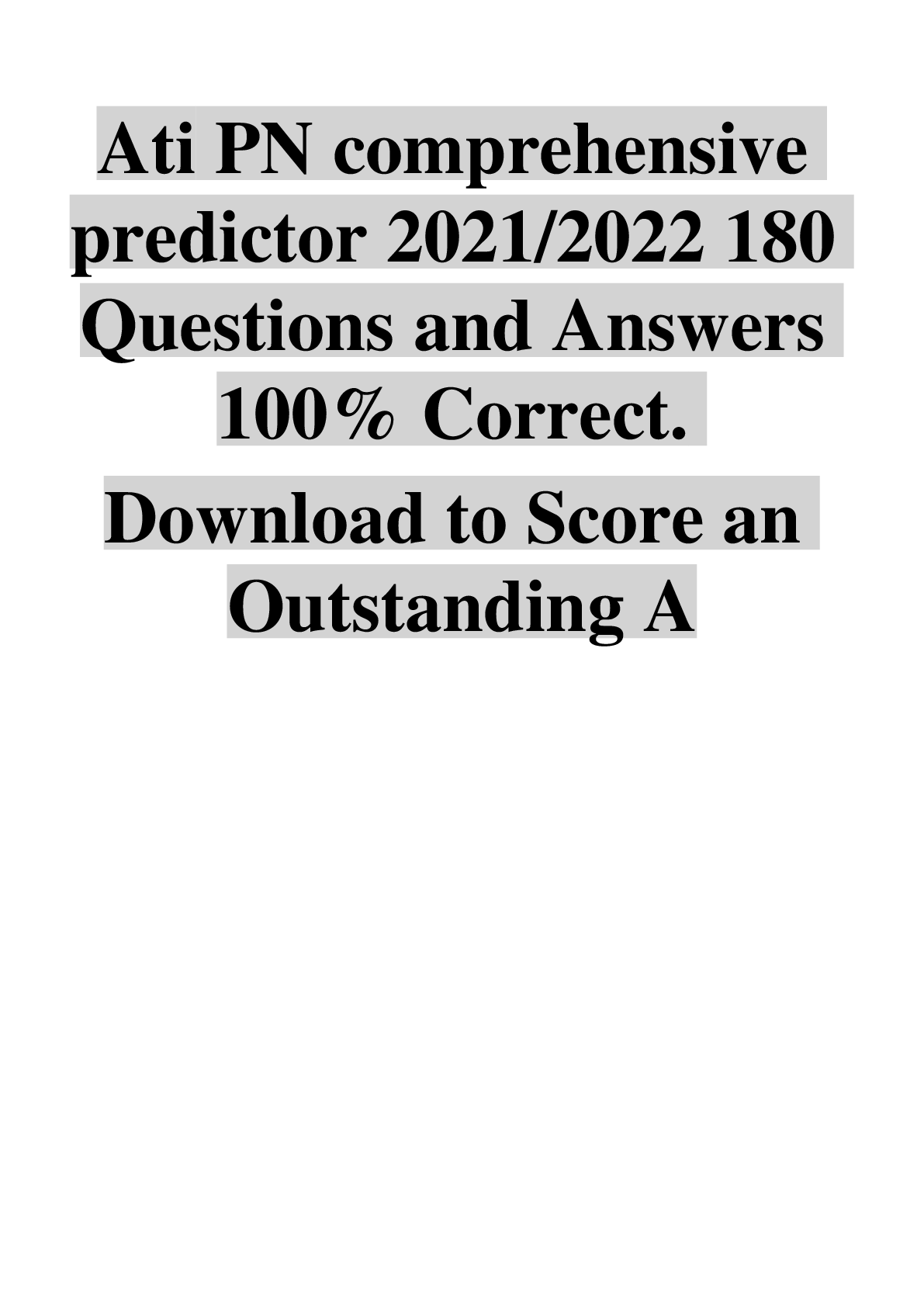
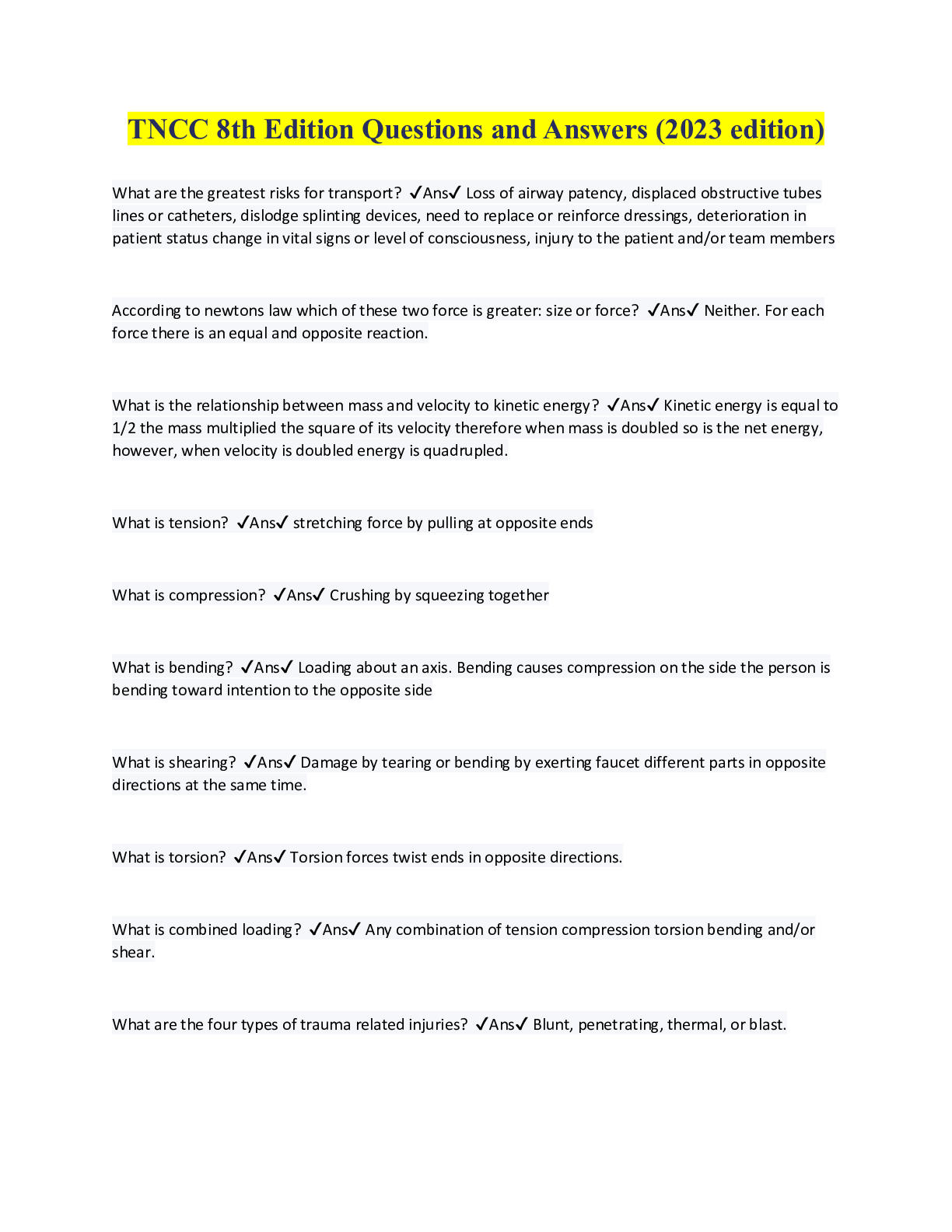
.png)
